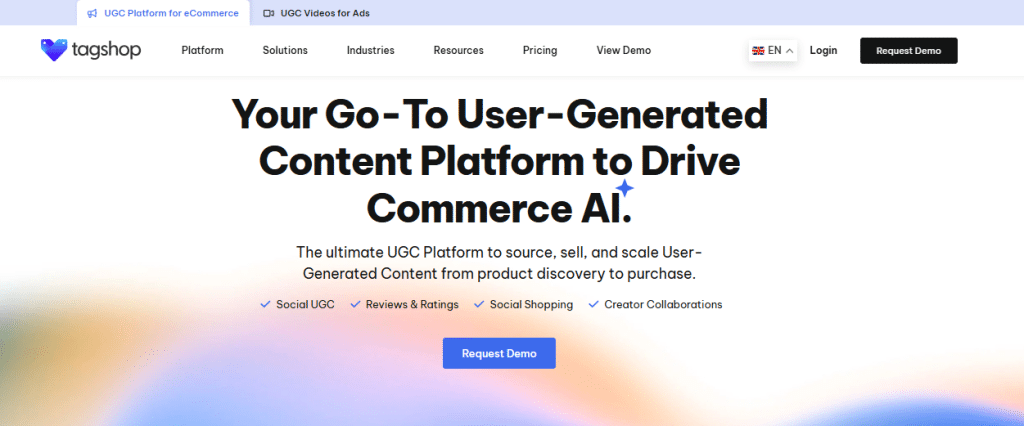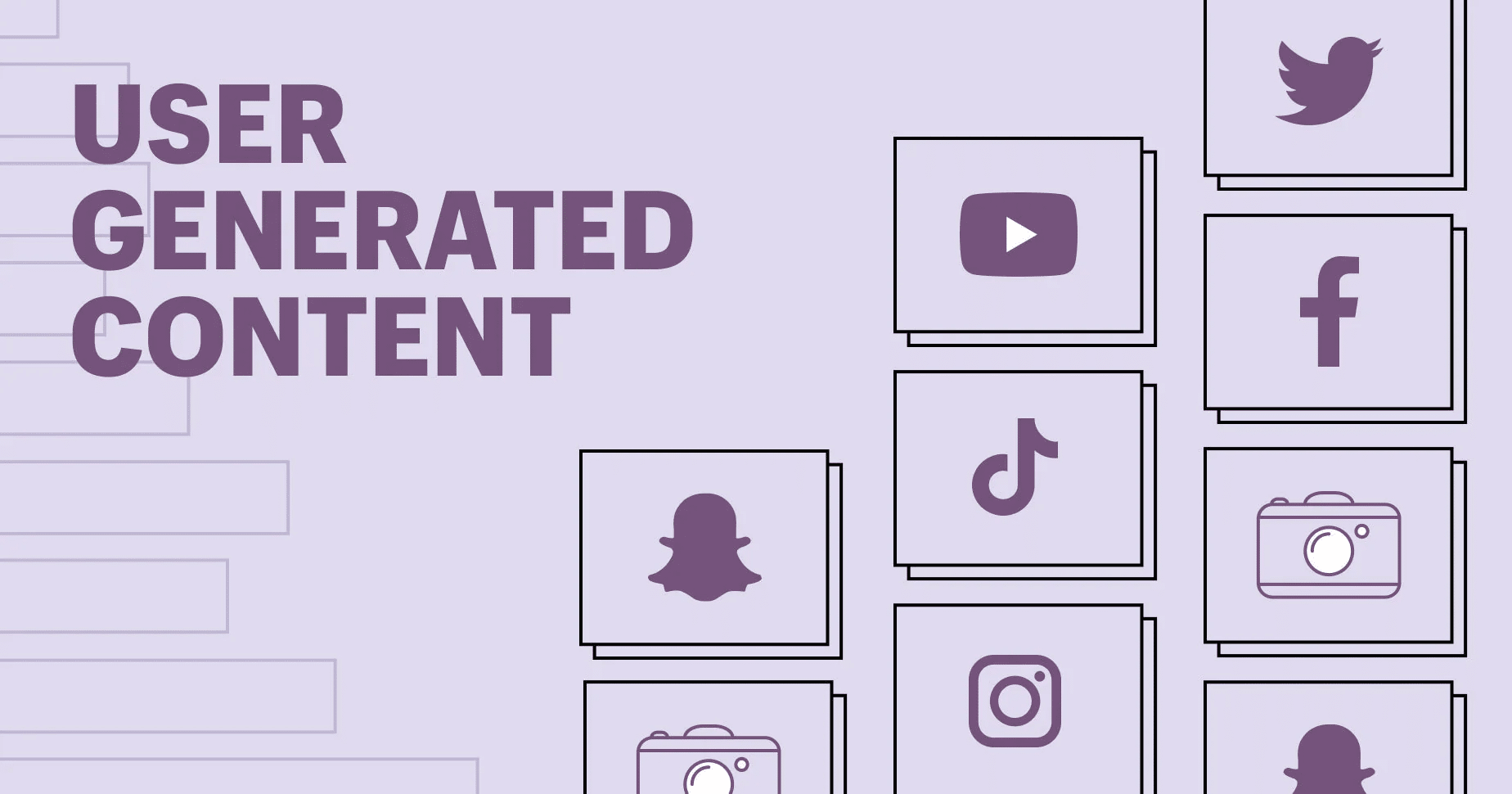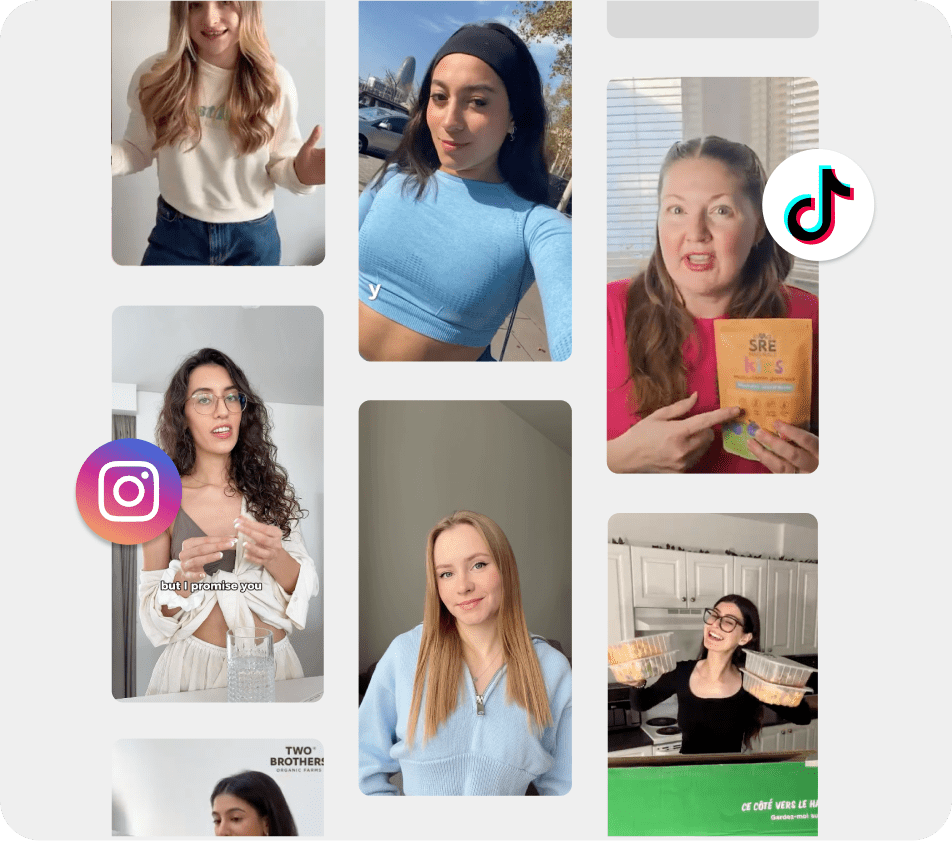User-Generated Content (UGC) advertisements represent a contemporary marketing approach that leverages content created by individuals not directly affiliated with the advertising brand. Instead, this content originates from customers, enthusiasts, or general users who share their experiences, opinions, and creative expressions related to a brand’s products or services. This encompasses diverse formats, including photographic imagery, video recordings, written reviews, personal testimonials, and various forms of shared experiences documented and disseminated by users.
What are UGC Ads?
UGC advertisements are defined by their reliance on content voluntarily produced by individuals who are consumers or proponents of a particular brand. This distinguishes them from traditional advertisements, which are typically conceived, produced, and disseminated by the brand or its contracted agencies. The core characteristic of UGC ads is their origin in the user base, reflecting genuine perspectives and interactions with the brand.
Efficacy: The Mechanisms Behind UGC Advertisement Effectiveness
The effectiveness of UGC advertisements stems from their inherent capacity to cultivate trust and project authenticity. Unlike branded content, which may be perceived as inherently biased, UGC is often viewed as a more credible and relatable source of information. This heightened perception of authenticity fosters stronger engagement among potential customers for several key reasons:
- Enhanced Trust: Content generated by peers or individuals with relatable experiences carries a greater sense of trustworthiness than direct brand messaging. Consumers are more likely to believe the experiences and opinions their counterparts share.
- Increased Relatability: UGC often depicts real-life scenarios and usage of products or services, making it easier for potential customers to envision themselves engaging with the brand. This relatability can bridge the gap between abstract marketing messages and tangible user experiences.
- Higher Engagement Rates: The authentic and relatable nature of UGC can lead to increased interaction, including likes, comments, shares, and overall time spent engaging with the advertisement. This heightened engagement can translate into more excellent brand recall and consideration.
- Influence on Purchase Decisions: Testimonials and positive experiences shared by other users can significantly influence prospective customers’ purchasing decisions. The social proof provided by UGC can alleviate concerns and build confidence in the brand’s offerings.
Illustrative Examples of UGC in Advertising
The application of user-generated content in advertising manifests in various forms:
- Customer Reviews and Testimonials: Direct quotes and narratives from satisfied customers highlighting a product or service’s benefits and positive aspects.
- Product Usage Photos and Videos: Visual UGC content showcasing how customers utilize the brand’s offerings daily, often shared on social media platforms.
- Social Media Posts Featuring the Brand: User-created content on platforms like Instagram, TikTok, and Twitter where individuals organically mention or feature the brand in their posts.
- Contest Submissions: Content generated by users in response to brand-initiated contests or challenges, often showcasing creativity and brand affinity.
- Unboxing Videos: User-recorded UGC videos document users’ experiences of receiving and opening a product, providing a genuine first impression.
Implementation Strategies: How Brands Can Utilize UGC
Brands can strategically integrate user-generated content into their advertising efforts through several methods:
- Encouraging User Participation: Proactively motivating customers to create and share content related to the brand through various means.
- Contests and Incentives: Organizing competitions or offering rewards in exchange for user-generated content submissions.
- Highlighting User Content: Featuring exemplary user-generated content across the brand’s social media channels, website, and other marketing materials.
- Social Listening: Monitor social media and other online platforms for organic mentions and content related to the brand.
- Requesting Reviews and Testimonials: Directly solicit feedback and encourage customers to share their experiences.
- Creating Branded Hashtags: Encouraging users to tag their content with specific brand-related hashtags to facilitate discovery and aggregation.
Advantages of Incorporating UGC into Advertising Strategies
The integration of user-generated content into advertising offers several notable benefits:
- Increased Brand Visibility: User-generated content can expand the brand’s reach as users share their experiences with their own networks.
- Enhanced Audience Engagement: The authentic nature of UGC fosters deeper connections and encourages more meaningful interactions with the audience.
- Stronger Connection with the Audience: By showcasing real customer experiences, brands can build a more personal and relatable connection with their target demographic.
- Cost-Effectiveness: Leveraging user-created content can potentially reduce the costs associated with traditional advertising production.
- Valuable Social Proof: UGC serves as powerful social proof, demonstrating the positive experiences of other customers and influencing potential buyers.
Types of UGC Ads
1. Social Media:
- Customer Reviews and Ratings: Customers leave reviews and ratings on platforms like Google, Yelp, and Amazon. Brands often display these ratings and reviews on their websites to build trust and transparency. For instance, Amazon showcases user ratings and reviews on product pages, influencing purchase decisions.
- Customer Testimonials: Customers share positive experiences with a brand’s products or services. Brands can collect and feature these testimonials on their website, marketing materials, or social media. For example, a hotel might highlight a customer’s glowing review in a UGC campaign to attract more guests.
- User-Generated Images and Videos: Customers share photos and videos showcasing their experiences with a product or service on platforms like Instagram, TikTok, or YouTube. Brands can request permission to repurpose these visuals in their marketing. GoPro, for instance, compiles user-generated action footage into captivating promotional videos.
2. Influencer Marketing:
- Collaboration with Influencers: Brands collaborate with social media influencers who have a significant following and align with their products or services. Influencers create content featuring the brand and share it with their audience. For instance, Zara might partner with a popular fashion influencer to showcase its latest collection.
- Influencer-Generated Content: Influencers often create high-quality content that the brand can repurpose. For example, a beauty brand may partner with a makeup artist influencer who creates tutorials and reviews using the brand’s products. The brand can then use this content on its platforms.
3. Online Reviews and Comments:
- Displaying Positive Feedback: Brands often highlight positive comments and reviews on their website and social media. This showcases customer satisfaction and encourages others to share their positive experiences. For example, a restaurant may display a customer’s comment praising their food and service on their website.
- Addressing Negative Feedback: While not strictly “advertising,” addressing negative feedback transparently and professionally can turn a potentially damaging situation into a positive one. Brands can show they care about their customers’ experiences and are actively working to improve. An airline, for instance, might respond to a traveler’s complaint on social media and offer a solution.
4. UGC Video Ads:
- Reels: Short UGC video content on UGC platforms like Instagram that showcases real people using products or services. For example, a fitness brand might compile customer workout videos into a Reels ad.
- YouTube Shorts/Videos: Brands can curate and repurpose user-generated content from YouTube Shorts or other short-form videos that feature their products or services. For instance, a travel agency might use vacation vlogs that customers have shared.
- Facebook: Facebook offers brands opportunities to leverage user-generated video content. For instance, a tech company might run Facebook ads featuring customers’ video testimonials or unboxing videos.
These various types of UGC ads offer brands diverse ways to engage with their audience, build trust, and leverage their customers’ and influencers’ creativity and experiences.
Best UGC Ads Platforms
These are the best UGC ad platforms for brands:
1. Tagshop

Tagshop specializes in transforming user-created content, particularly visuals like photos and videos, into shoppable experiences. This means it goes beyond simply collecting UGC; it actively uses it to facilitate direct purchases.
It empowers brands to create shoppable galleries and integrate UGC into product pages, turning customer testimonials into sales opportunities.
2. TINT
TINT is a user-generated content platform that excels in curating and displaying UGC from various social media channels.
It empowers brands to harness real-time content updates and offers moderation capabilities for a seamless experience.
With TINT, businesses can leverage the power of user-generated content to enrich their websites, events, and other marketing channels
3. Bazaarvoice
Bazaarvoice is a specialized UGC platform that focuses on customer reviews and ratings. It allows brands to collect and showcase valuable customer feedback to build trust and influence purchase decisions.
Bazaarvoice is an essential UGC tool for companies looking to amplify their online presence by harnessing the voices of their satisfied customers.
4. Tagbox
Tagbox is a versatile UGC platform designed to streamline the collection and display of user-generated content for businesses.
It offers comprehensive moderation and analytics features to ensure brand safety and track campaign performance.
Tagbox simplifies the process of aggregating content from diverse sources, such as social media and reviews, making it an ideal choice for brands seeking to showcase authentic user experiences and engage with their audience effectively.
5. Crowdriff
Crowdriff is a visual UGC platform geared towards the travel and hospitality industry. It specializes in curating and displaying user-generated images and videos.
Businesses in this sector can use Crowdriff to showcase authentic destination photos and experiences, captivating travelers and boosting engagement.
6. Billo
Billo is an emerging UGC platform known for its simplicity and user-friendly interface. It provides businesses with the tools to collect, moderate, and display user-generated content on their websites and marketing materials.
Billo also offers customization options, ensuring that brands can match the aesthetics of their UGC displays with their unique identity. This makes it an accessible choice for those seeking a straightforward UGC solution.
Implement UGC Ads in Marketing
1. Legal Considerations:
Obtaining User Consent: It is crucial to obtain explicit consent from the creators of user-generated content (UGC) before using it in your marketing campaigns. For instance, if you plan to feature a customer’s photo in an advertisement, you should seek their permission and clearly explain how the content will be used. Make sure to document these permissions to avoid legal issues.
Example: An apparel brand may ask customers to submit photos with a specific hashtag and include a consent clause in the contest’s terms and conditions.
Copyright and Intellectual Property Issues: When using user-generated content, be aware of copyright and intellectual property laws. Ensure that your content doesn’t violate any copyrights or trademarks. For instance, if customers share a video of themselves using your product, they must respect their intellectual property rights while utilizing the content.
Example: A food delivery service must ensure it doesn’t use copyrighted music in a user-generated video without the creator’s consent.
2. Content Moderation:
Filtering Inappropriate Content: Implement content moderation systems to filter out inappropriate, offensive, or inappropriate content that doesn’t align with your brand values. Platforms like Instagram allow businesses to filter comments and automatically hide those that contain specific keywords.
Example: An educational platform may filter out comments containing hate speech or harmful content to maintain a safe online community.
Ensuring Quality and Relevance: Curating UGC is essential to maintaining the quality and relevance of the content you use in your marketing. While you want to preserve authenticity, not all user-generated content will be suitable for promotional purposes. Choose content that best represents your brand and resonates with your target audience.
Example: A tourism agency may select user-generated photos and videos that showcase breathtaking travel experiences to entice potential travelers.
3. Campaign Strategy:
Setting Clear Goals: Before launching a UGC campaign, define clear and measurable objectives. Determine what you aim to achieve, such as increasing brand awareness, boosting sales, or engaging with your audience. Setting specific goals will help you track the success of your UGC ads.
Example: An e-commerce site running a UGC campaign may set a goal of increasing website traffic by 20% over the next three months.
Incentivizing Users to Create Content: Provide incentives to encourage your customers and followers to contribute to UGC. These could include discounts, contests, or recognition. By offering rewards, you motivate users to engage with your brand and create valuable content.
Example: A beauty brand may run a contest where participants can win a free product in exchange for creating a makeup tutorial using the brand’s products and sharing it on social media.
Successfully implementing UGC ads in your marketing strategy involves navigating legal considerations, moderating content to ensure quality, and strategically planning your campaigns. UGC can be a powerful tool for building brand trust and engagement when executed effectively.
Challenges and Risks
1. Potential for Harmful Content:
Implement robust content moderation tools and policies to filter offensive, harmful, or inappropriate content. Respond promptly to any flagged content and enforce community guidelines.
Example: Social media platforms like Instagram allow businesses to filter comments, hide inappropriate content, and report abusive users. In addition, companies like YouTube use automated content analysis to identify and remove harmful content.
2. Managing Privacy Concerns:
Respect user privacy by obtaining explicit consent for content usage. Clearly communicate how their content will be used and assure users of data protection. Be transparent about data collection and storage practices.
Example: Airbnb obtains user consent before sharing their listings on the platform. They also have privacy settings, allowing users to control the visibility of their information.
3. Maintaining Control Over Brand Image:
Develop clear brand guidelines and establish criteria for user-generated content that aligns with your brand’s image and values. Collaborate with influencers or users who closely match your brand identity.
Example: Apple maintains strict brand control by curating UGC that aligns with its minimalistic and premium image. They choose content that complements their aesthetic and message.
Addressing these challenges and risks effectively is essential for a successful UGC advertising campaign. By employing appropriate strategies and learning from successful UGC video examples, brands can harness the benefits of user-generated content while managing potential pitfalls.
Conclusion
In summary, User-Generated Content (UGC) Ads have become a game-changer in advertising. Their importance is undeniable, as they offer unparalleled authenticity and trust in the eyes of consumers. UGC Ads provide the benefits of building trust and credibility through real-life experiences, driving higher engagement, and offering cost-effective marketing solutions.
As we look to the future of advertising, UGC Ads are poised to play an even more significant role. In an age of increasing skepticism towards traditional advertising, authentic content created by users will continue to be vital for building genuine connections with the audience.
We encourage businesses to embrace the power of UGC in their marketing strategies. It’s not just a trend; it’s a sustainable way to foster brand loyalty, engage customers, and drive growth. You can craft a brand narrative that resonates in the digital age by harnessing your customers’ creativity and passion.





